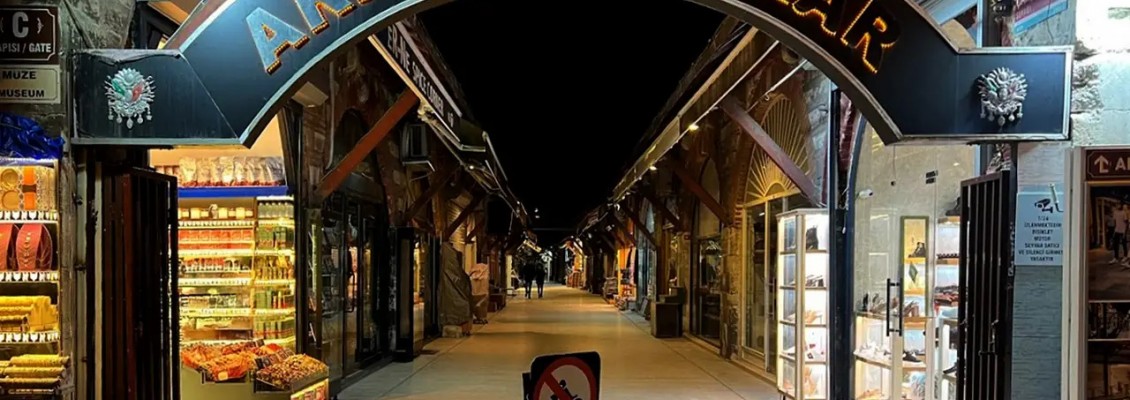
ARASTA BAZAAR
Bazaars have been an integral part of Turkish culture, both in the past and today. The term arasta refers to a marketplace consisting of shops arranged along a central axis, a structure the Ottomans began constructing from the second half of the 15th century. Today, historical Arasta bazaars can be found around famous mosques such as Sultan Ahmet Mosque (Blue Mosque) and Selimiye Mosque in Edirne.
Bazaars were commonly located near mosques, much like hamams (public baths) and madrasas (Islamic schools). In particular, covered bazaars were often built as part of a mosque complex. This was because they served as a financial source for the maintenance of mosques and their associated institutions. Additionally, bazaars played a social role by bringing people together around the mosque, reinforcing a sense of community and congregation. The income from these bazaars was often managed through a waqf (Islamic endowment), ensuring continuous funding for mosques, madrasas, soup kitchens, and other public services.
One of the famous Arasta Bazaars is the one located in the south of the Sultan Ahmet Mosque. Arasta Bazaar, also known as the Sultan Ahmet Arasta, was built in the 17th century as part of the Sultan Ahmet Mosque and its complex. Commissioned by Sultan Ahmed I, the mosque and its surrounding structures were designed by the chief imperial architect of the time, Sedefkar Mehmed Ağa. As an integral part of the mosque complex, the Arasta Bazaar has undergone various restoration efforts over the centuries, preserving both its historical significance and architectural beauty to this day.
This historic marketplace was known as the Sipahiler Çarşısı (Cavalrymen’s Bazaar) during the Ottoman period. It served as a commercial hub where sipahis—elite Ottoman cavalry soldiers—could purchase essential equipment, including saddles, weapons, and other military supplies. Over time, as the role of the sipahis declined with the modernization of the Ottoman military, the bazaar evolved to accommodate a wider range of merchants and artisans.
The Bazaar was built on the remnants of ancient Byzantine structures and extensively restored throughout the time. Excavations carried out in the 1930s in this area uncovered mosaics belonging to the Byzantine Palace, confirming that this site was once part of the imperial palace district. These discoveries have further enriched the historical significance of the bazaar, making it not only a shopping destination but also a place where history and culture intertwine. This cultural interaction and the historical heritage are displayed in the Mosaic Museum which is located within the bazaar. This museum houses exquisite mosaic artworks, which were unearthed in the 1950s from excavations in the surrounding area.
Today, Arasta Bazaar offers a wide range of traditional goods, including handcrafted carpets, kilims, souvenirs, İznik tiles, scarves, and more. Visitors can also relax in cafés adorned with Ottoman-style décor, providing a unique and immersive experience. As you explore the bazaar and discover its many treasures, don’t forget to bargain—it’s an essential part of the shopping tradition!

Leave a Comment